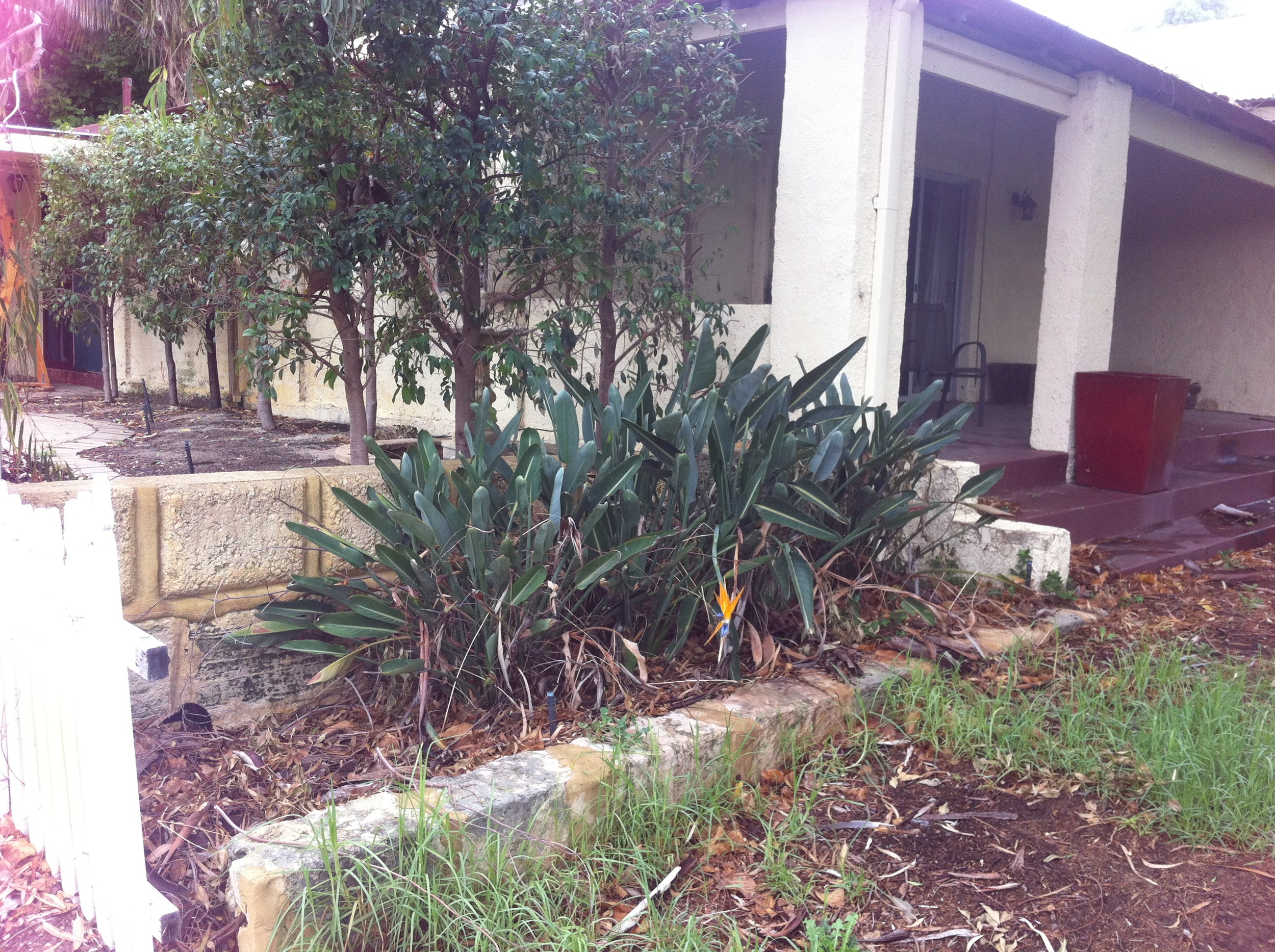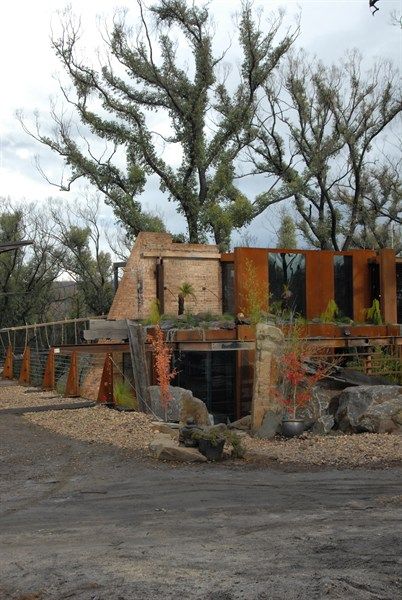Kokedama, what, why and how.....
While trawling through through hundreds of Pinterest pictures a few weeks ago (something I like to do while I am having a horizontal moment on the couch) I found the most amazing pictures of hanging gardens or as they are more formally known 'Kokedama'. This of course immediately tweaked my creative interest and I HAD to try making one....or four!
There are a few websites that run through the process of making them and even YouTube videos. But here is how I made mine.
What you need
1 bag of Bonsai mix
1 bag of Peat moss
1 brick of sphagnum moss
1 bag of Richgro Sand to Soil (with bentonite clay) - not shown
string
baby plants - try maidenhair fern, succulents
green moss (available from florist supplies)
Firstly, mix 1/3 of each the bonsai mix, peat moss and clay into a container with a little water. Keep mixing until it comes together to form a ball. This ball should hold its shape if you toss it in the air.
Then you need to gently knock the soil off the roots of your plant. The more you can remove, the better. Then wrap the roots with a small amount of wet sphagnum moss.
Split the soil ball in half and put your root ball inside. Then work the soil firmly around the roots to seal the ball completely.
Then you can start placing large sheets of the green moss around the ball. I quite enjoyed how this felt. I think that the texture reminded me of playing with moss in the bush when I was a child.
Press each sheet on firmly and tear off smaller bits to fill any gaps.
Then start wrapping the ball firmly with the string, winding in many directions to secure all of the green moss. When you are happy with the finished look, and that the moss is secure, tie it off. This one was hanging by the string, but I've started cutting the string off and looping some fishing line through to hang it. For something different, try wrapping your ball in a brightly coloured string.
Sphagnum moss can be used to cover your ball if you are having trouble with the green moss.
Maintenance ... I've found the best way to water the plants is to dip the ball in a bucket of water for a few seconds. Also spray the leaves with a water bottle occasionally.
Ive hung 3 of these in a protected spot near my front door. My visitors see them when they arrive and they are right outside my office window..... Little bit of green in my concrete jungle.
Maintaining and managing your garden for the bushfire season...
Part 6
Establishing a new garden takes time, and to ensure that is effective in the years to come it will require regular ongoing maintenance to protect the defendable space around your home.
Regular maintenance actions for the garden as part of your Bushfire Survival Plan should include:
- Clear ground fuel from underneath plants and around the house.
- Re-mulch with non flammable materials, such as stone, shells or other non-flammable materials.
- Prune plants with low hanging branches, providing separation of at least 2m from the ground.
- Replace diseased, stressed or dead plants. Ensure to replace with low flammable plants as per my previous post.
- Keep plants well hydrated through watering and mulch. Watering less frequently but for longer encourages the plants to develop deeper roots and therefore reducing moisture loss during hot spells.
- Remove other flammable objects from within your defendable space.
- Remove any fine, dead material that has accumulated within plants.
- Remove weeds from the defendable space.
- Mow lawns and keep regularly hydrated.
(source: CFAVIC Landscaping for Bushfires, 2011)
(all photos in this article by: Kerri Fennell)
Please stay safe for the rest of this bushfire season. That is the end of this series of posts. Im really looking forward to sharing with you over the next few weeks some other things I have been working on lately. How to make a pallet garden for your herbs, filing cabinet planters, design lessons learned along the way, and my week in Bali.
Garden styles suitable for a bushfire prone area....
Part 4
In this weeks blog you will find some simple, practical examples of how you can apply the design principles outlined in last weeks blog, to some typical garden styles....
HILLS GARDEN
The hills of Western Australia generally provide excellent conditions to grow gardens. The conditions allow for a wide range of plants to be grown successfully.
As a result, hills gardens often display great diversity and layers of vegetation. Many gardens are located adjacent to national parks and native forests that are highly flammable. The local site and context should be taken into careful consideration with each design.
This property is nestled into the side of a hill with national park beyond. This property required substantial retaining walls, which in turn would help to create barrier to a fire coming through.
COASTAL GARDEN
Strong seasonal winds, coupled with salt can make establishing and maintain a coastal garden particularly challenging. Along with sandy soils with poor water and nutrient retention, the addition of organic matter and mulches is critical to garden success. Creating microclimates is the key to a successful coastal garden, by providing shelter and screening to maximise these problems.
This house, very close to the beach is subject to constant high winds. Any fire coming off the dunes needs to be quickly stopped before it consumes the house.
SUBURBAN GARDEN
Recently, severe fires have moved beyond the rural fringe and into our suburbs, especially as many of our new suburbs are creeping into the outskirts of the city.
The planning principles from last weeks blog, should be followed as closely as possible, given the limited suburban space you may have.
Luckily for this house, they have quite a substantial sized block, compared to a lot of the new suburbs being currently built. However, the same principles apply.
RURAL GARDEN
Many rural gardens are on large farming properties and the house and garden location should be considered carefully, along with the placement of other structures, elements and services.
Paddocks surrounding a house can quickly dry out over summer causing fire to spread rapidly. The defendable space around the house is the most critical component, along with good planting and design strategies.
Also note that the house position is relatively close to the roadway and the driveways give fire trucks and other services plenty of room to access the property. This property also has a 5m wide fire break around its entire perimeter. The neighbours each have the same, therefore creating a good sized 10m fire break around their properties.
In next weeks blog we will look at what plants you can put in your garden that will reduce the chance of ignition, or lower the intensity of the blaze.
Planning your house and garden to prevent bushfire....
Part 2
Reducing bushfire risk is most effective when considered early in the planning process, and there are a number of factors to consider.
Source: Lifestyle.com.au - Grand Designs Australia - Bushfire House
New Houses
The first thing you should be aware of, is your local building and planning requirements. These vary from council to council and could influence where the house can be built, the level of construction required, and even how they want the vegetation managed on your property.
One of the most effective ways to reduce bushfire risk is to locate the house in the most appropriate location. Ideally the house should be located away from unmanaged vegetation, steep slopes, saddles or narrow ridge tops. Ideally as close to public roads and accessways, as you can.
You should also look at the risks from surrounding properties and if the existing vegetation within or close to your property could pose a significant risk.
The design of the house plays a part too. Anywhere embers can lodge or enter a house can pose a risk. Things like decks, windows, doors and roof areas or complex designs that create little nooks and allow leaf and plant debris to accumulate can all contribute to the overall risk.
Hollingworth House at Point Henry, Bremer Bay, Western Australia. Photo: Andrew Halsall
Read more: http://www.watoday.com.au/wa-news/was-bushfireproof-housing-project-thats-designed-to-be-burnt-20131028-2wc3l.html#ixzz2qujU5HUM
Defendable Space
This is an area of land around the buildings where the vegetation is modified and managed to reduce the effects of flame contact and radiant heat.
This is comprised of an inner and an outer zone with different vegetation management requirements, careful garden design considerations and requires regular maintenance as part of your Bushfire Survival Plan.
Essentially this is a clearance zone around your home, and the size will depend on the planning scheme of each council. This does not mean clearing all plants and trees.
Some plants are lower in flammability and are suitable to be closer to the house. Locating things like lawn, ponds, pools, tennis courts, concrete, gravel and paving, close to the house is helping to create a defendable space.
We will look into this further in the next blog.
(source: CFAVIC Landscaping for Bushfires, 2011)
Construction
Construction standards are linked to defendable space and the greater the defendable space, the lower the construction requirement under the Australians Standards (AS3959-2009).
Provision of Services
Water is essential for firefighting.
In all areas the water supply must have appropriate pressure, access and fittings and the amount and reliability is critical. Sometimes the mains water supply is cut off, so it is essential to provide a water tank and link it with a pump or generator.
Any roads within the property must be capable of accommodating fire trucks, and which also require specific construction standards.
Source: Pinterest - Breuer/Lundberg Cabin. LUNDBERG DESIGN livestock tank pool. 25-feet diameter and 14-feet deep.
Existing Houses
Much of the information above also applies to existing homes. The resilience of an existing home can be improved by retrofitting some building elements, such as a dedicated water, reassessing the gardens and landscaping within the defendable space and ensuring that fire trucks can access the property.
Landscaping
Gardening is a personal activity and when planning any garden there are many things to think about apart from bushfire.
Some features that home owners generally want incorporated in a garden can reduce the spread of fire by placing them between the house and the bushfire hazards. These can be paths and hardscaped areas, pools or water features, tennis courts and vegetable gardens.
Source: Lifestyle.com.au - Grand Designs Australia - Bushfire House
Whatever the style of garden is chosen, it must be appropriate to the local risk. Consider the bushfire risk early in the planning process by incorporating some of the design principles, which I will talk about in the next instalment of this blog.



























